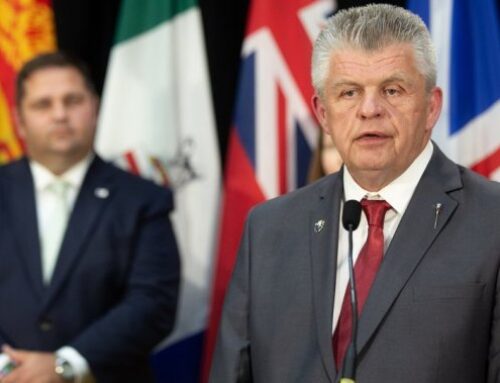‘Big, Beautiful Bill’ cuts majority of clean energy incentives
July 4, 2025
SACRAMENTO, Calif. — As someone whose business revolves around renewable energy, Aztec Solar President Ed Murray says it made sense for his business to look into EV work vehicles.
“We started our company in 1980, and we’ve been, you know, progressing with solar pool heating, solar water heating, solar electricity,” Murray said. “And now, we thought the next step was EVs.”
As a medium-sized business with 49 employees, Murray said his new fleet of six EV work vehicles, that each cost $120,000, wouldn’t have been possible without help.
“You see Fedex out there and Amazon with these vehicles, they can afford it,” Murray said. “We can’t [afford them] without the special treatment that we get from Mitra and the Air Quality Board and Smud, the local utility. They’re all giving us help and rebates to get these things.”
The three companies Murray mentioned utilize state and federal clean energy incentives, but the majority of that federal support is gone under President Donald Trump’s Big Beautiful Bill.
The president calling green tax credits a scam.
Senate Majority Leader John Thune reiterated Republicans’ focus on fossil fuels over renewable energy.
“The Biden administration took us down the wrong path,” Thune said. “That restricted development of Americans conventional energy resources, and imposed regulations that heap new burdens and costs on conventional energy producers.”
Most tax credits for large wind and solar projects will end in 2028, with residential solar credits ending this year and EV credits by September.
UC Davis economist Colin Murphy, who focuses on clean energy, explained that government incentives made clean tech cheaper and warns that fossil fuels are finite, so a shift to renewables is inevitable.
“It can’t stop EVs from taking over,” Murphy said. “It can’t stop wind and solar from increasing deployment globally. But it can slow it down quite a bit. And that is a problem because if fully mature economies like the US don’t decarbonize by mid-century. We have no chance of averting the worst impacts.”
Murphy added that the argument of renewable energy being unreliable compared to fossil fuels is an outdated issue.
“Ten, 20 years ago, the argument on solar was you only get power during the day,” he said. “But now, grid scale lithium ion batteries are cheap enough [which can store very large quantities of power to utilize at anytime].”
There are still incentives for nuclear and bio fuels in the “Big Beautiful Bill,” but Murphy said those energy sources come with climate issues such as nuclear waste and land clearing for bio fuels.
Murphy added by slowing down research and development on solar, wind and EV technology, the U.S. was allowing China to further become the market leader it already is in manufacturing and creating more advanced technology of this type.
Range anxiety for EV work vehicles has also been an argument against credits for such programs, but Murray said his get close to 300 miles, which is more than enough. And he’s already seen big cost savings.
“I just saw the bill for the electricity to charge these [work vehicles] was $600 a month,” Murray said. “We were paying probably $4,000 for gas [in our old] vehicles. So, the savings are substantial.”
And why he’s happy to share information with other companies, for the benefits to the climate and bottom lines.
Search
RECENT PRESS RELEASES
Related Post




